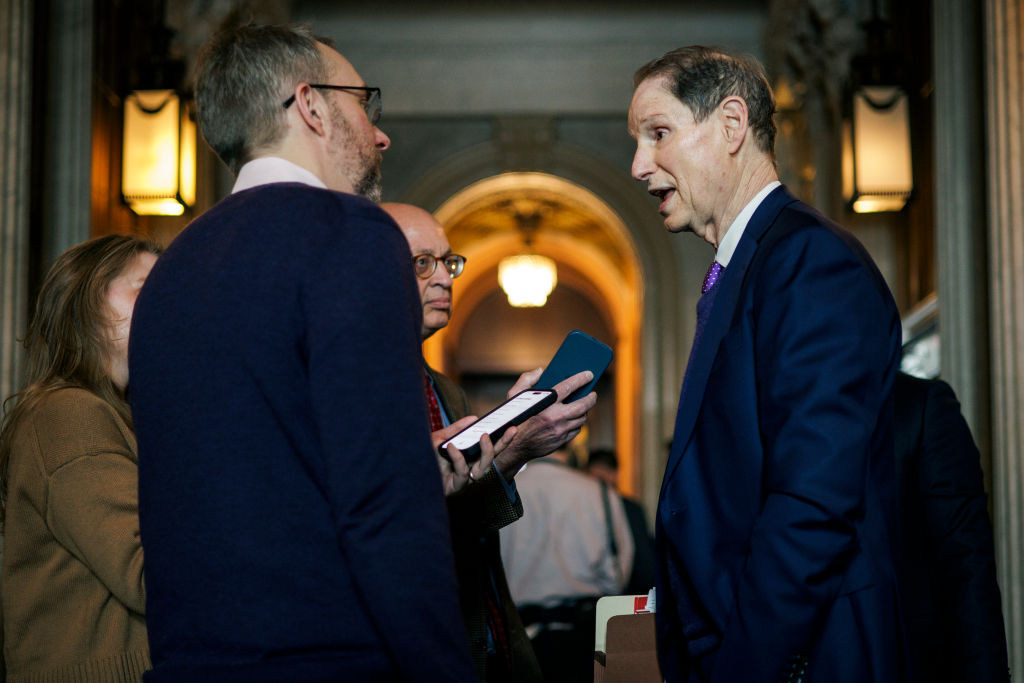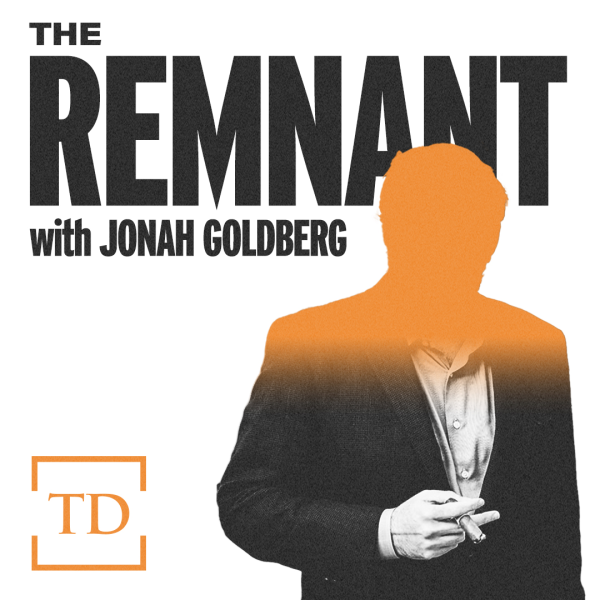A renewed effort to expand the child tax credit (CTC) is currently making its way through Congress. The proposed policy would increase benefits for low-income families—especially those with multiple children—automatically grow the credit with inflation, and most contentiously, eliminate the work requirement for families who had earnings in the prior year. In debating these changes and even bigger ones down the line, policymakers will ultimately have to decide what the CTC should be: Is it tax relief for families, or is it a welfare program?
The newly proposed CTC changes are part of a compromise legislative package that ties expanding the CTC to corporate tax relief. The bill is already making its way through the House, and while it has bipartisan support, passage by Congress is far from guaranteed. Some Democrats believe the reforms don’t go far enough to assist poor children, while some Republicans have expressed concerns about relaxing work requirements and increasing spending.
As it stands now, the CTC provides tax relief for families and encourages work. A family pays $2,000 less in federal income taxes for each child under the age of 17. It also provides a refundable credit (in the form of a check from the Internal Revenue Service) of up to $1,700 per child for families whose income is too low to owe income taxes. This benefit encourages work because it is not available to non-workers and it grows, or phases in, at a 15 percent rate for each dollar of earned income above a $2,500 minimum threshold. For example, if a family earns $10,000 in a year ($7,500 above the minimum threshold), they receive $1,125 as a refundable credit ($7,500 times 15 percent). The refundable credit can also be thought of as offsetting the approximately 15 percent payroll tax on earnings.
The newly proposed policy would make four changes to the CTC. First, families who owe no federal income tax would be eligible for the full CTC benefit by 2025, assuming their earnings are high enough. Second, the CTC would phase in faster for families with more than one child—at a 30 percent rate for families with two children and 45 percent for families with three children. Third, families with no earnings or tax liability could still receive the CTC if they had earnings in the prior year (i.e., a one-year lookback), turning the annual income requirement into an “every other year” work requirement. Fourth, the maximum per-child benefit would be pegged to inflation, allowing it to rise above $2,000 in future years.
A heated debate over these changes has quickly emerged. Democrats have emphasized their potential anti-poverty effects, touting one report estimating the CTC’s changes would lift 400,000 children out of poverty in its first year. Some Republicans remain unconvinced and have resolved to maintain a 15 percent phase-in rate for all family sizes and to preserve the annual work requirement. My recent study with coauthors from the American Enterprise Institute estimates that eliminating the annual work requirement would cause a net reduction of 150,000 workers in an average year.
Everyone, however, agrees that the proposal would not fully bring back the pandemic-era CTC temporarily enacted in 2021. That year, Congress provided a guaranteed income to all families with children, regardless of earnings or tax liability. The policy gave a $3,600 benefit per child under age 6 and $3,000 for older children, paid out in monthly installments. The annual $100 billion price tag together with the lack of a work requirement—and the estimated 1.5 million jobs it would ultimately cost according to a study I coauthored with University of Chicago colleagues—led the Democratic majority in the Senate to reject extending the 2021 policy into future years.
Ever since the 2021 policy expired, some Democrats have tried to resuscitate the full unconditional credit. Those efforts failed, but the new bipartisan bill represents the first real legislation with a chance to get partway there. Eliminating the CTC’s annual work requirement opens the door to further disconnecting the program from work in future policy negotiations. In addition, the refundable credit’s 30 percent or higher phase-in rate for families with multiple children severs the CTC from tax relief, since it would more than offset the approximately 15 percent payroll tax on earnings. Families who receive the non-refundable credit pay no income tax, and so they would receive a larger CTC check than the amount of taxes they pay in. Because these changes would weaken work incentives and move the CTC further away from tax relief, they push in the direction of the CTC from 2021.
To inform the debate over the recent bill and its movement toward a guaranteed income, it’s worth stepping back to ask what the purpose of the CTC should be in the first place. Again, should it be tax relief that recognizes the financial costs of raising children, or an unrestricted cash welfare program?
At least historically, the CTC is rooted in the former view. When it was first enacted in 1997, the CTC generally provided only a nonrefundable tax credit that offset tax liability for families with children. It complemented the personal exemption for dependents—every dependent claimed by a family allowed them to exempt a portion of their income from taxation.
Over time, the CTC began to do more than simply reduce income tax liabilities of families by providing a refundable credit for families with no income tax liability. However, the refundable portion was at first capped at 10 percent of earnings over $10,000 and eventually rose to 15 percent of earnings over $3,000. As such, it could be viewed as roughly offsetting the payroll tax workers face even when they don’t incur any income tax.
The Tax Cuts and Jobs Act starting in 2018 eliminated the exemption for dependents, but in effect replaced this tax discount with a larger CTC whose maximum amount was doubled from $1,000 to $2,000 per child. Today, the CTC is essentially about tax relief for families and is the only general tax provision—unlike the narrower earned income tax credit, which is available only to lower income families, and the child and dependent care tax credit, which applies only to families with childcare costs—that accounts for the increased household costs associated with additional children.
A contrasting view is that the CTC should be converted into a no-strings attached welfare program available to all families with children, a “tax credit” in name only.
Defenders of this view cite the unfairness of the CTC in leaving out the poorest children whose parents have no earnings. While it’s true that the CTC does nothing to help children of parents with no earnings or income tax liability, that doesn’t mean that we don’t have other policy tools to address this problem.
Existing safety net programs like the Supplemental Nutrition Assistance Program (SNAP, formerly food stamps), Medicaid, housing assistance, and cash welfare provide resources to low-income families, often in parallel with other supportive services poor families need to move out of poverty. In 2022 we spent more than $1 trillion on these four programs alone, overwhelmingly for Medicaid, or about $28,000 for every person below the official poverty line (notably, spending on these programs does not go exclusively to the poor).
We should debate whether that’s the right amount of resources and whether we’re spending it effectively. But we should not use the tax code as a run-around to the safety net we already have. Tax credits should make the tax code more fair. Safety-net programs should help poor families escape poverty.
Regardless of its intended design, advocates of converting the CTC into a guaranteed income for families tout the impact they claim it would have on children’s later-life outcomes—higher earnings, less dependence, and lower incarceration rates. But that claim is far from clear. The strongest evidence on positive impacts of government benefits for children’s long-run outcomes comes from the Earned Income Tax Credit, which like the existing CTC is a tax credit that requires work. Evidence of positive impacts of government benefits that do not require work tends to be older and less extensive. So replacing a work-promoting tax credit like the CTC with a guaranteed income risks hurting poor children in the long run.
Where does that leave us on today’s debate over the bipartisan legislation to expand the CTC? Two provisions represent a clearly inadvisable shift away from the CTC’s proper function as tax relief. First, eliminating the annual income requirement would mean that even a family that does not work and pays no taxes in a given year could still receive a CTC benefit. And second, imposing a phase-in rate of more than 15 percent for families with multiple children would lead families to receive a tax discount greater than the amount of income and payroll taxes they pay.
The other two provisions of the new bill could, at least arguably, lead the CTC to treat families more fairly. The provision allowing families without an income tax liability to receive the full CTC—while maintaining the 15 percent phase-in—would provide a fuller discount to families for the payroll taxes they pay. It’s worth pointing out, however, that viewing this provision as tax relief requires viewing the earned income tax credit, which already phases in at a rate of 15 percent or more, as solely a pro-work income support program rather than offsetting payroll taxes. Finally, increasing the maximum benefit level with inflation makes sense in light of the rising cost to raise a family over time.
Nevertheless, productive debate over the future of the CTC requires thinking clearly about its ultimate purpose. The CTC should provide tax relief for families; it should not be turned into a welfare program.
Editor’s Note: This article is part of a Dispatch debate series. On January 30, Patrick T. Brown made the case for Congress’ latest child tax credit proposal.








Please note that we at The Dispatch hold ourselves, our work, and our commenters to a higher standard than other places on the internet. We welcome comments that foster genuine debate or discussion—including comments critical of us or our work—but responses that include ad hominem attacks on fellow Dispatch members or are intended to stoke fear and anger may be moderated.